Here are some of the most absorbing dolphin facts for kids including its diet, species, reproduction and where does it live. Dolphins are the close relatives of whales and propoises. There is a significant difference in sizes of several dolphin species. They belong to the family of Delphinidae. Biologists maintain that some of the species believed to have been evolved some 10 million years ago.
Dolphin Facts For Kids
- The weight of the dolphins ranges from 1.2 m (4 ft) and 40 kg (90 lb) and goes up to 9.5 m (30 ft) and 10 tonnes (9.8 long tons; 11 short tons).
- These animals inhabits in the shallower waters.
- Dolphins are by far one of the most intelligent animals on the planet earth.
- They are the most sociable marine animals in that they avidly respond to humans while kept in captivity.
- The population of dolphins deems to be greater in places where the food is abundant. Groups may comprise thousands of animals.
- Though occasionally, dolphins are also found to be engaged in the acts of aggression. This is observed particularly in males as compared to females.
- Dolphins produce several sounds including whistling and burst-pulsed sounds. By producing whistling sounds these animals tend to communicate with each other.
- Dolphins are the acrobatic animals. While playing they usually jump over the water surface. It seems as if they are playing however, biologists aren’t still sure about this attitude.
- These species are known to asleep with one brain hemisphere in slow-wave sleep thus vigilant about the potential predators all the time. However, under captivity dolphins are found to asleep completely because there is no risk of other predators. The sleeping time of dolphins lasts for only 4 – 5 minutes.
There are about five different kinds of dolphin species. - The largest dolphin is known as ‘Killer Whale’ or ‘Orca’.
- These species have the ability to swim 260 metres beneath the water surface.
They are warm-blooded animals.
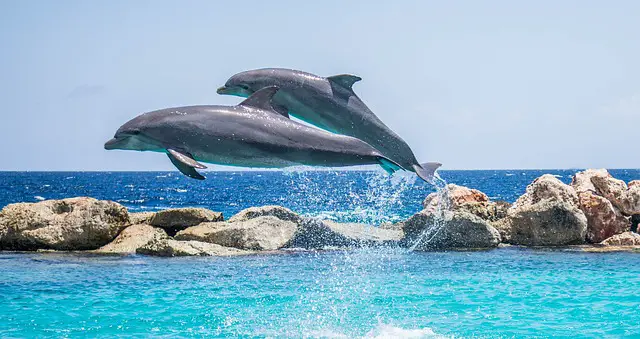 Feeding Ecology and Diet
Feeding Ecology and Diet
- Dolphins predominantly feed on small fish and squid. Some of the species (Bottlenose Dolphins) have a quite unique way of hunting in that they beat their tail at the surface and start circling around.
- Large number of small fishes tends to be trapped inside the circle.
Read More: What Do Dolphins Eat?
Distribution and Habitat
- Dolphins inhabit almost all the major waters of the world but they usually avoid living in extreme cold waters such as North and South Poles; however, a few types such as orcas, do live there.
- Some species including Hector’s dolphins fancy living in shallow waters nearer to the shore. Spinner dolphins are generally found in the middle of the ocean.
- They cannot breathe into the water and they must show themselves to the surface for air. Nevertheless, dolphins would not dive more than 200 meters into the ocean.
- Indo-Pacific humpback dolphins are generally found in the waters of the Sundarbans mangrove. Amazon River dolphins usually dwell in the Bita River in Columbia.
- While Hector’s dolphins live in New Zealand, bottlenose dolphins are the residents to the west and south Scotland. Of all dolphins, four species resides only in river waters; Amazon River dolphin or boto; the Indus dolphin, baiji or Chinese river dolphin; and the Ganges dolphin.
- Dolphins fancy feeding in habitats where prey densities are high and the water quality is good. Irrawaddy dolphins are believed to be declining as they are limited to estuarine and near-shore habitats. They have become disappeared from most of the major habitats of the world.
- Two native dolphins inhabiting South America—tucuxi and boto—remain abundant and widespread, but the excessive human intervention continues to thwart dolphin’s habitats.
Threats
- There are a few predators of dolphins apart from humans. Some of the potential predators include dusky shark, tiger shark, great white shark, and bull shark.
- Killer whale is another noteworthy predator that occasionally hunts dolphins. As for the diseases, these animals are too much susceptible and are often found to be infected with parasites.
- Dolphin facts about its threats states that the population of these animals is overwhelmingly affected by the human hunting in some river waters.
- Some of these waters are Ganges, Yangtze River, and Amazon. Waste materials such as plastics, agricultural pollutants and other hazardous stuff result in several health problems of dolphins.
- These things are often left in water when there is a collision of boats. Similarly, oil spilling also leaves an overwhelming negative effect on the dolphins’ health.
Reproductive Biology
- The period of gestation lasts for 11 – 12 months approximately. However, for some species it can go up to 17 months.
- Females give birth to a single calf under normal conditions.
- The mother will nurse its calf for about 11 months to 2 years.
- These calves stay with their mothers for about 3 – 8 years.
 Different Types of Dolphins
Different Types of Dolphins
- Long-Beaked Common Dolphin
- Short-Beaked Common Dolphin
- Common Bottlenose Dolphin
- Burrunan Dolphin
- Southern Rightwhale Dolphin
- Northern Rightwhale Dolphin
- Atlantic Spotted Dolphin
- Chinese White Dolphin
- Spinner Dolphin
- Striped Dolphin
- Clymene Dolphin
- Risso’s Dolphin
- Fraser’s Dolphin
- Hector’s Dolphin
- Hourglass Dolphin
- Heaviside’s Dolphin
- Commerson’s Dolphin
- Chilean Dolphin
- Rough-Toothed Dolphin
- Peale’s Dolphin
- Melon-headed Dolphin
- Pygmy Killer Whale
- Ganges River Dolphin
- Indus River Dolphin

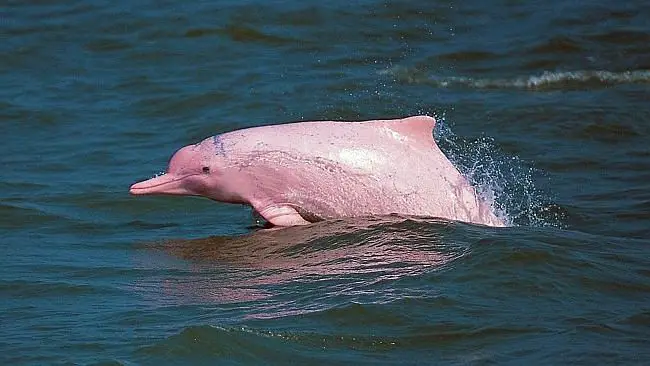

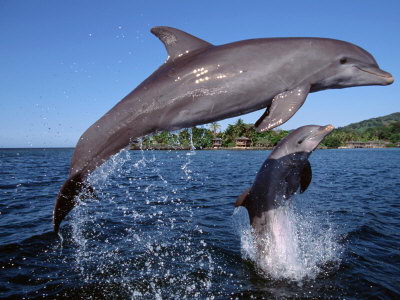
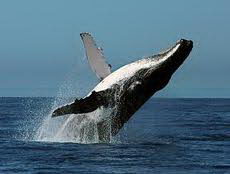
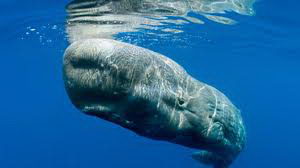
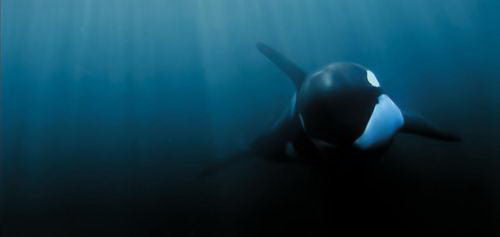
I think u need more info on their habitat
Not really because this website is about REPRODUCTION.
you need more info on the indus river dolphin
i think it is fine
Really good for your homework but u just have to make the sentences long. 9/10.:-)
LET me correct one very big thin: Dolphins are only seen to respond “avidly to humans in captvity” because on the surface tha tis what they are trained to do. Training is done by food conditioning,that means STARVATION unless they do as they are conditioned to do. For every one of those “avid” dolphins in captivity ( by the way.. the word captivity means the since they don’t swim into nets by choice) SEVENTEEN have been killed in the capture process. Dolphin brains are larger than Human brains, with a larger limbic or emotional processing system. NO dolphin in captivity wants to be in a concrete tank. Their powerful sonar continuously bounding of the walls is a source of torment lto them. Most dolphins in captityng have teeth ruined by chewing on metal gate bars… because they are seeking a way out. If you or your children love dolphins SEE THEM IN THE WILD, not as kidnapped victims in a dirty, tortured circus.FOr more information about dolphins and how they are captured/kidnapped, trained/abused please visit and http://www.dolphinproject.org , watch the Oscar winning movie “The Cove” ( they don’t give Oscars to untrue things if you have ANY doubts) or watch CNN’s “Blackfish” and follow me on twitter @24CarlyS119.